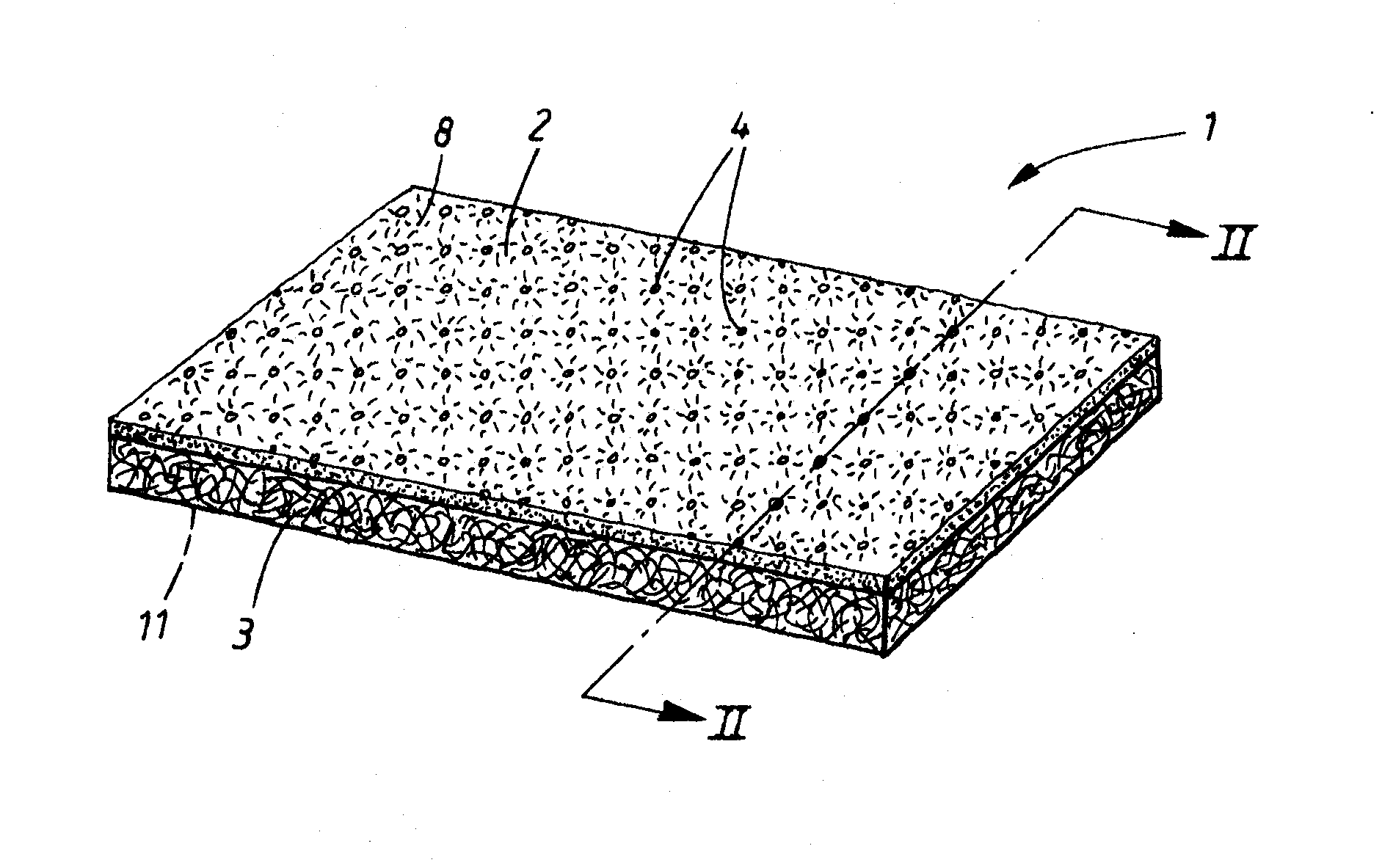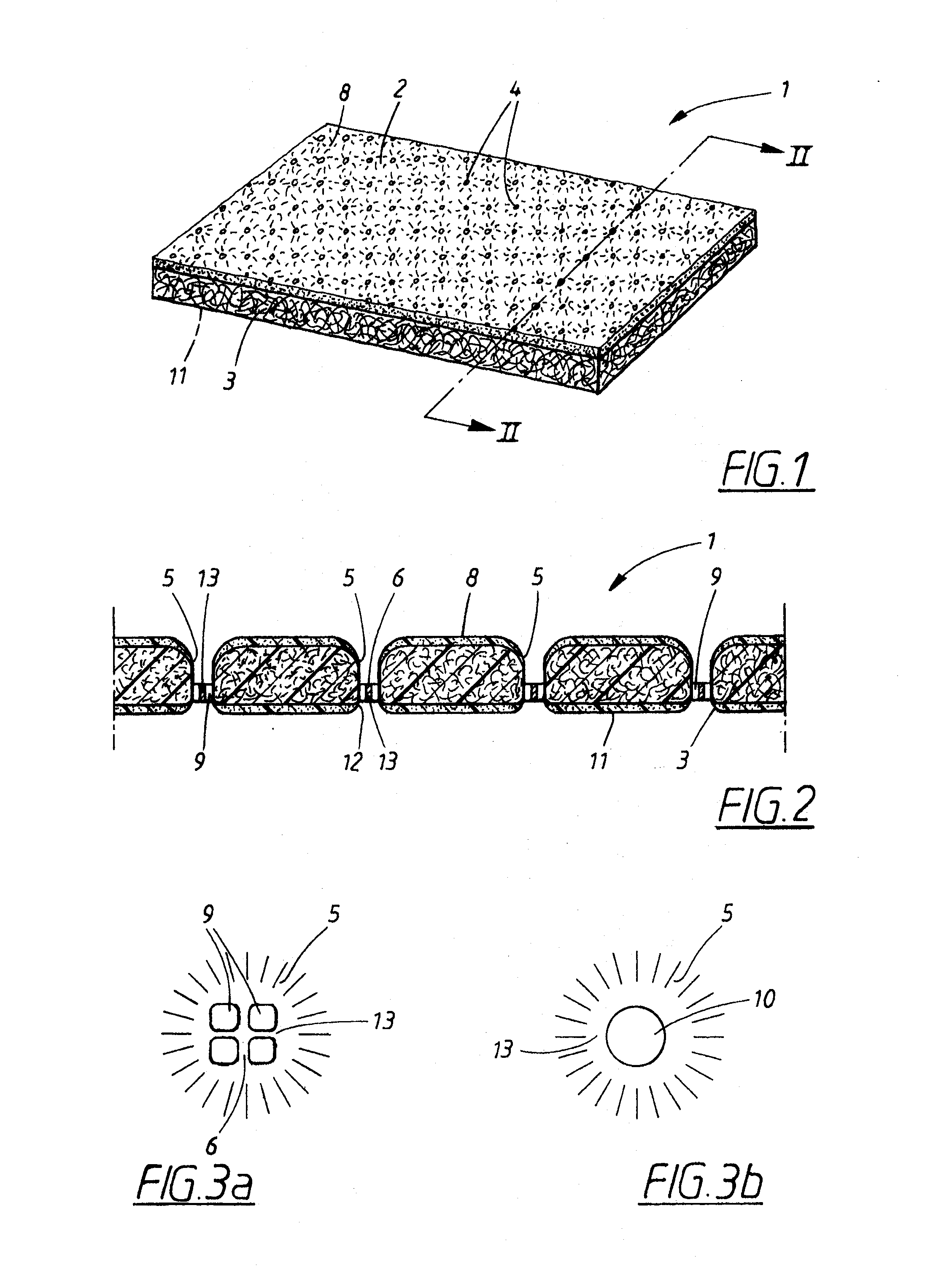Material web for use in an absorbent article
a material web and absorbent article technology, applied in the field of material webs for use in absorbent articles, can solve the problems of reducing the liquid-permeability at the bonding, the acquisition rate is much too low to be able to instantaneously, and the cost of materials is high, so as to achieve stable, stable, and good tensile strength. , the effect of improving the tensile strength
- Summary
- Abstract
- Description
- Claims
- Application Information
AI Technical Summary
Benefits of technology
Problems solved by technology
Method used
Image
Examples
Embodiment Construction
[0040]The term material web in the present invention denotes a web comprising one or several layers. For example, a material web can constitute, as described below, a surface layer and a liquid transfer layer in an absorbent article. In addition, a layer can comprise one or several strata.
[0041]The term film-like structure denotes a structure comprising melted or softened thermoplastic components. The film-like structure suitably comprises intact fibres, which are bonded together by the melted or softened thermoplastic components and give strength to the welded joints. However, it is also conceivable that all fibres in the film-like structure have been melted. The amount of intact fibres can vary greatly from case to case depending on, for example, which materials are included in the material web, how much energy is applied to the material web in the binding step and how much time the binding step takes.
[0042]FIG. 1 shows a material web in the form of a laminate 1 comprising a first...
PUM
| Property | Measurement | Unit |
|---|---|---|
| thickness | aaaaa | aaaaa |
| pressure | aaaaa | aaaaa |
| diameter | aaaaa | aaaaa |
Abstract
Description
Claims
Application Information
 Login to View More
Login to View More - R&D
- Intellectual Property
- Life Sciences
- Materials
- Tech Scout
- Unparalleled Data Quality
- Higher Quality Content
- 60% Fewer Hallucinations
Browse by: Latest US Patents, China's latest patents, Technical Efficacy Thesaurus, Application Domain, Technology Topic, Popular Technical Reports.
© 2025 PatSnap. All rights reserved.Legal|Privacy policy|Modern Slavery Act Transparency Statement|Sitemap|About US| Contact US: help@patsnap.com



